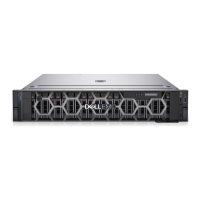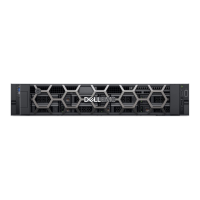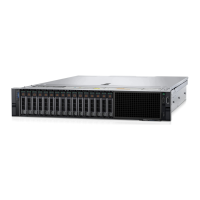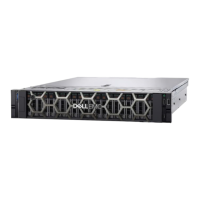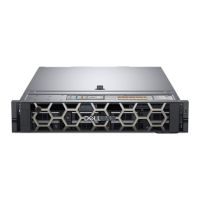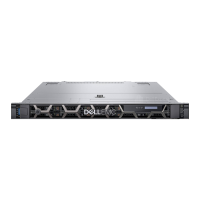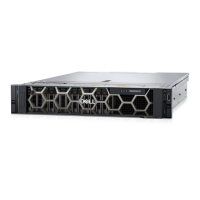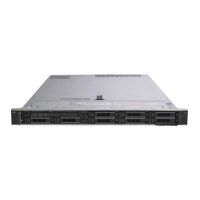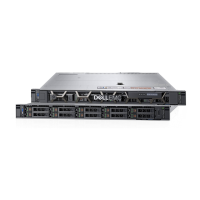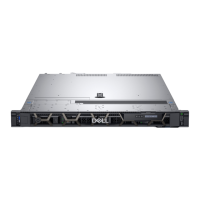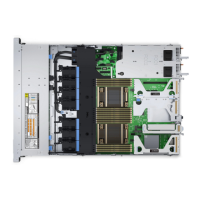Processor and heat sink
Removing a heat sink
Prerequisites
1. Follow the safety guidelines listed in the Safety instructions.
2. Follow the procedure listed in the Before working inside your system.
3. If installed, remove the air shroud.
WARNING: The heat sink and processor are too hot to touch for some time after the system has been powered
off. Allow the heat sink and processor to cool down before handling them.
NOTE: The procedure to uninstall standard and L-type heat sink is similar.
Steps
1. Using a Torx #T20 screwdriver, loosen the captive screws in the order that is mentioned on the heat sink:
a. Partially loosen the captive screws 1 and 2 (approximately 3 turns).
b. Partially loosen the captive screws 3 and 4 (approximately 3 turns).
c. Loosen the captive screws 1 and 2 completely.
d. Loosen the captive screws 3 and 4 completely.
NOTE: The captive screw numbers are marked on the heat sink.
2. Lift the heat sink from the system.
Figure 75. Removing a heat sink
Next steps
1. If you are uninstalling a faulty heat sink, replace the heat sink, else remove the processor.
Installing and removing system components
79
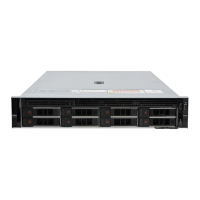
